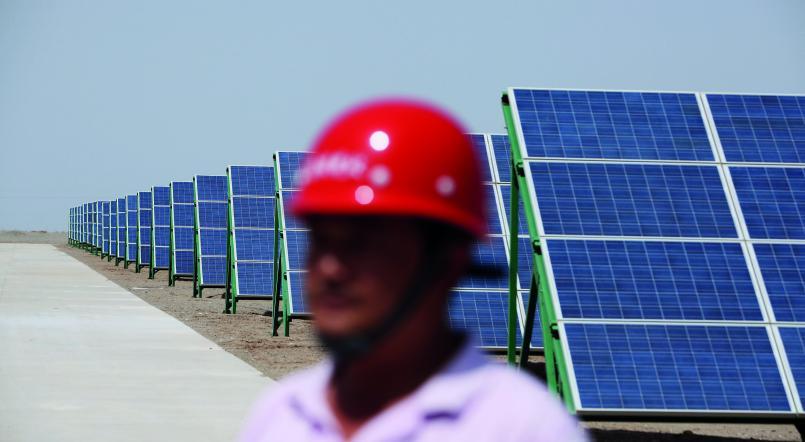Throughout Asia, the need for greater energy security and better management of the region’s natural resources is as rife as ever. Supported by rapid urbanisation, a rising middle class and greater consumer demand for greener products, Asia’s cleantech sector has undergone significant growth over the last decade.
The sector incorporates industries deemed to be both environmentally friendly and sustainable in the long run, and includes a number of verticals ranging from renewable energy, to water technology and waste management.
Ernst & Young’s Global cleantech insights and trends report 2012 highlighted Asia’s achievements in this sector. According to the report, Asian cleantech sales overtook those of European companies for the year 2011, largely as a result of surging Chinese renewable energy investments in the wind and solar power verticals. In particular, sales by Asian companies rose 20% year-on-year to US$56 billion, as opposed to European and North American sales, which fell 32% to US$49.5 billion and 29% to US$30 billion, respectively.
Performance
While 2011 sales for Asia’s cleantech sector seem to paint the picture of an industry performing well, in truth, today it is not. Due to reduced government subsidies and market overcapacity in almost all verticals, investment in the region for 2012 was near half what it was for the year before. This has led many industry experts to compare the state of Asia’s cleantech sector to that of the 2001 dot-com bubble.
Government Subsidies
At the heart of the industry’s problems are government subsidies, which have led to market overcapacity and under-investment. Two decades ago, governments around the region recognised the challenges they would soon face with regards to sustainable development, energy security and the environment. Many thus set ambitious renewable energy targets that were heavily subsidised. Today, most Asian governments are looking to increase renewable energy usage by five to 10% by 2020 – a feat many industry experts say is overambitious.
According to Gil Forer, Leader of the Global Cleantech Centre at Ernst & Young, only when subsidies are completely removed will the market fully recover, as outlined in the foreword of the company’s 2012 report. However, Forer acknowledged that this wouldn’t be easy.
“Business leaders in a number of cleantech verticals are coming to the contrarian conclusion that now is the time to develop a road map to end subsidies rather than ask for more. They recognise that success depends on driving the efficiencies, innovations and business models needed to compete head-on with traditional technologies,” said Forer.
Overcapacity
Market overcapacity is also proving highly problematic for numerous verticals. One such sector is China’s solar power industry.
In October 2012, Li Junfeng, Deputy Director of the Energy Research Institute at China’s National Development and Reform Commission, claimed the nation’s solar panel industry was like “a patient on life support”, and would have to undergo radical reforms in order to overcome its overcapacity “crisis”, as reported by The Financial Times.
Li described bailouts from China’s local governments as “suicidal” and claimed such actions would not diminish the problem of overcapacity. Citing potential bankruptcies and the lack of clarity on this matter under Chinese law, Li also claimed, “It is not easy for companies to do well. But it is even harder for them to die.”
Just two months later, China’s central government bailed out the country’s largest players to the combined sum of US$2 billion. It also banned the protection of solar companies by local governments and encouraged further market consolidation. As a result, shares of China’s leading solar companies soared by as much as 18% in just one day of trading. Yet, market research firm IHS notes the number of bankruptcies facing Chinese solar firms over the next few years will match those that will survive.
“A major flaw in the management of most cleantech start-ups is that they think government funding will last forever. And – as we are now seeing – it doesn’t,” said an unnamed regional executive from one of China’s top three solar companies in an exclusive interview with HQ Asia.
“Cleantech companies simply cannot survive on their own without some form of government intervention, whether via direct financing, tax breaks or other incentives. This is because the sector is R&D-centric, ultra-competitive and much more capital-intensive than many appreciate,” the executive explained.
Investment
Some experts say there has never been a better time to invest in Asia’s cleantech sector. “You want to be investing when the sector is in distress, not when everyone is clamouring for an opportunity,” said Ron Mahabir, co-founder and Managing Director of Asia Cleantech Capital in a December 2012 interview with Asia Venture Capital Journal. “Since 2006, this has been by far the biggest macro opportunity of our lifetime,” added Mahabir.
Lessons Learnt
The lessons learnt from Asia’s cleantech sector can be applied to companies of all industries and sizes. First, private companies should not become too reliant on government subsidies. When times are bad, such subsidies are reduced. This puts strain on companies used to receiving assistance. Second, organisations must tackle overcapacity and allow consolidation to take its natural path, rather than continue to support failing systems that look certain to end in their current state. Third, and more positively, investing in under-performing sectors may not be a bad thing, as they will likely rise again, albeit having undergone some form of transformation.
This article was first published in HQ Asia (Print) Issue 05 (2013).


